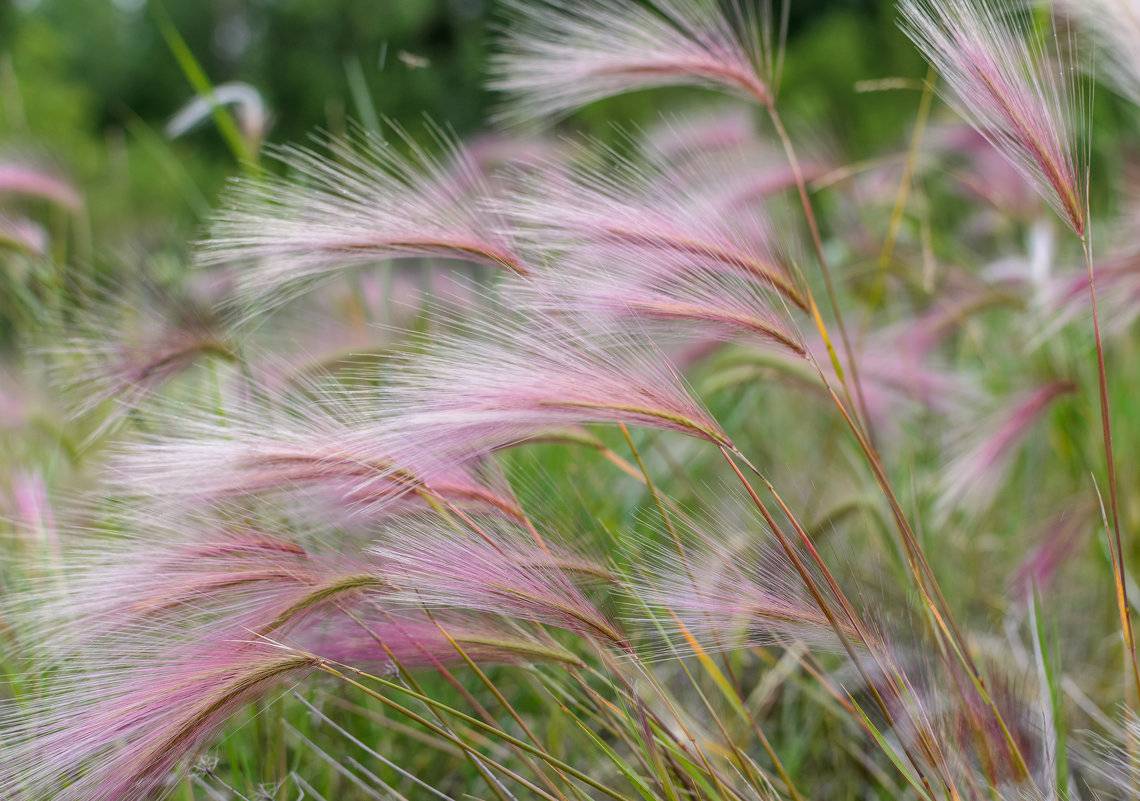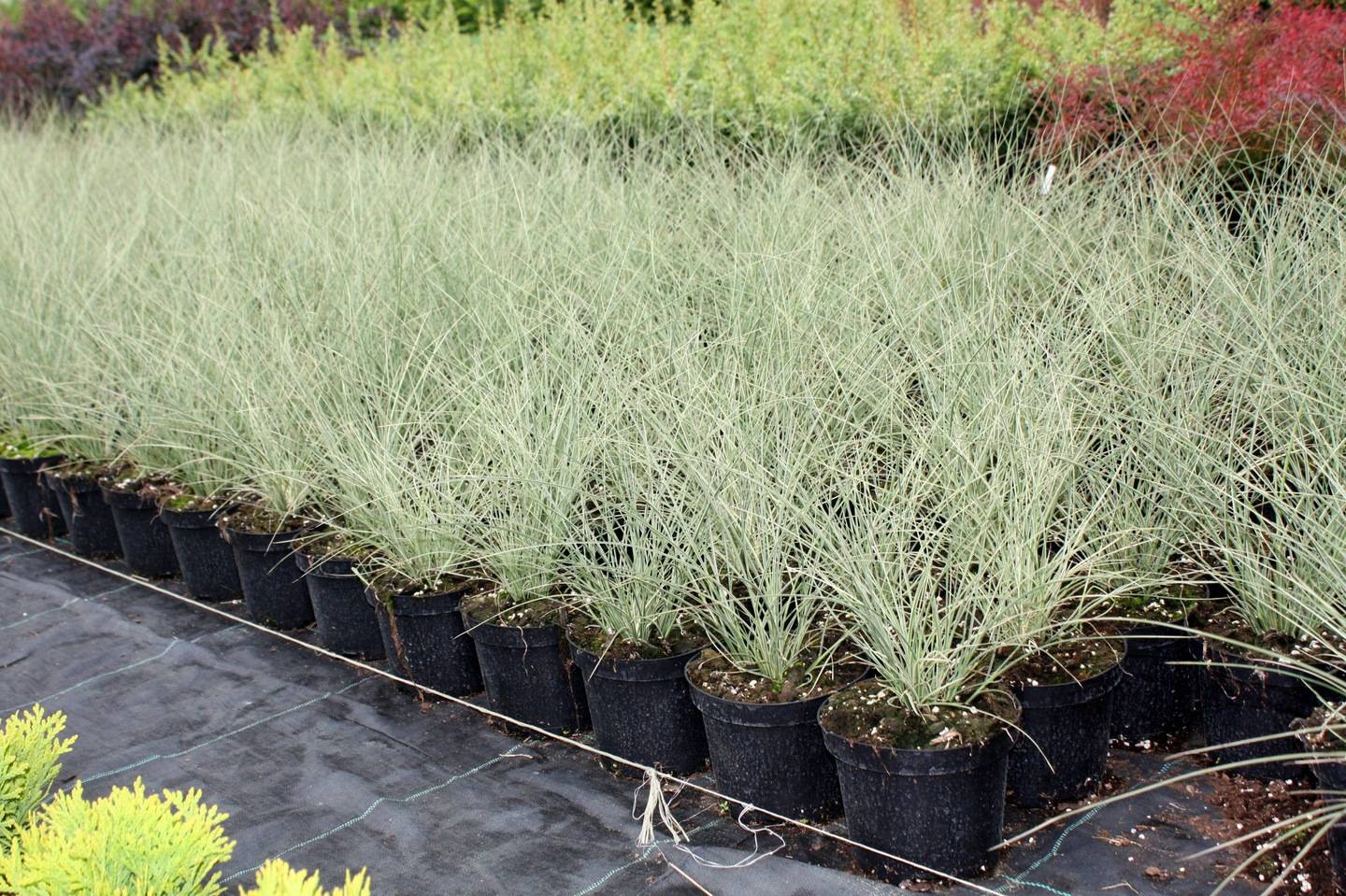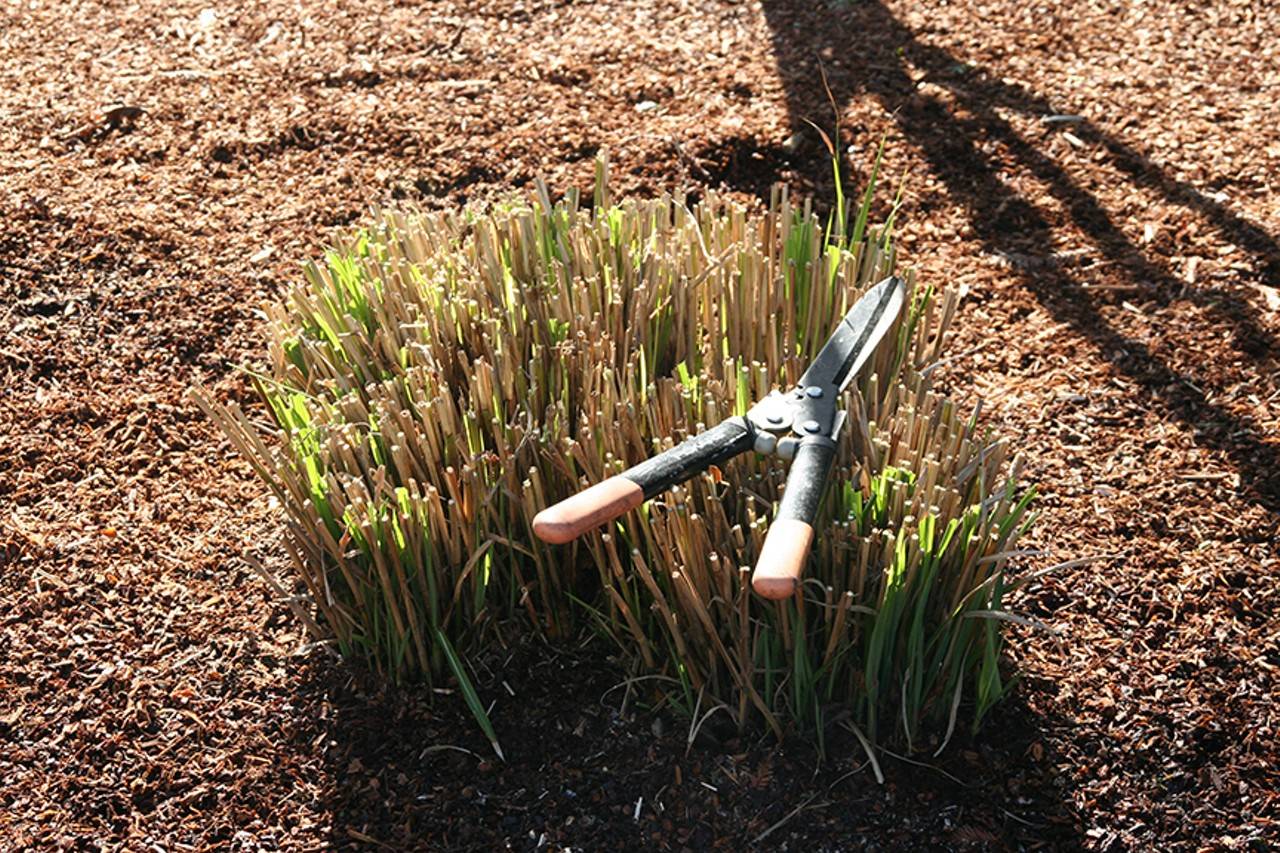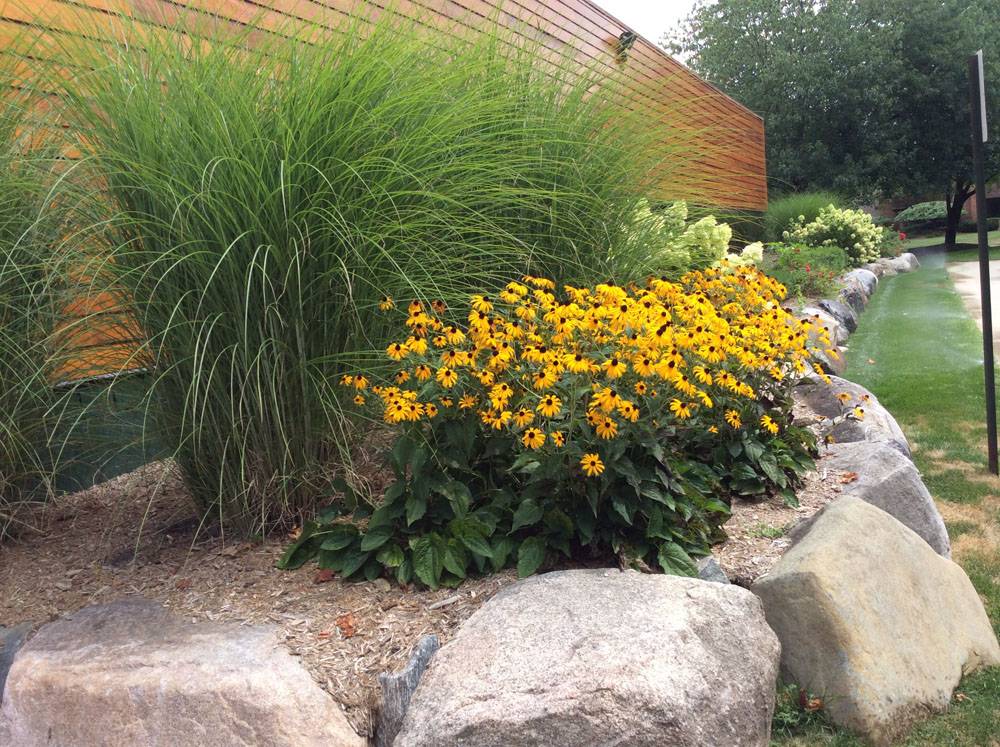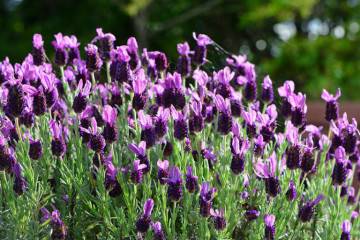Miscanthus - planting and care in the open field
Content:
Miscanthus is a flowering cereal that many gardeners successfully grow on their plots in temperate climates, decorating lawns, reservoirs, flower beds and creating hedges. It is also often used by florists when drawing up flower arrangements from dried flowers.
Description of the flower
Miscanthus, or fan (from Latin Miscanthus) is a perennial plant of the Cereals family. The height of the bush depends on the variety and ranges from 0.8 to 3 m. The stems are straight and strong. Hard leaf plates 0.5-1.8 cm wide have a leathery texture with scales. Inflorescences are fan-shaped panicles 10-30 cm long with spikelets 0.3-0.7 cm.
Most are wild, found throughout Russia. The most common are the following types:
- Miscanthus sucrose is a perennial with a developed root system. The cereal reaches a height of no more than 2 m. The leaves are hard, broadly linear. Sugar-flowered Miscanthus begins to bloom in August in fan-shaped panicles 30 cm in length;
- Giant miscanthus got its name from its straight stems, reaching a height of 3 m. The leaves are narrow, hard, dark green in color with a light strip in the middle. This is a frost-resistant species, withstands temperatures up to -34 ° C. The pink panicle flowers eventually acquire a silvery color;
- Chinese miscanthus has high frost resistance. This type of perennial has a short rhizome, the stem height reaches 3 m. Scaly leaves 1.5 cm wide by autumn acquire a red-yellow hue. It blooms from August to October with pink, silvery spikelets.

Miscanthus Chinese Gracilimus is the most popular and favorite variety among gardeners, it will rightfully become a highlight on any site
Miscanthus Chinese, or Chinese reed (Miscanthus sinensis) has many varieties. Below are the names and descriptions of the most famous ones:
- miscanthus purpurescens. The height of the stems is not more than 1.5 m. The gray-green leaves change color to red-orange in autumn. In early autumn, narrow spikelets are colored purple. Over the course of two months, the inflorescences gradually change color to white;
- Miscanthus Morning Light. Photophilous variety up to 2 m in height. The bush has narrow leaves with white stripes along the edges and blooms in late September with reddish clusters;
- Miscanthus Little Zebra. A low-growing bush up to 1.2 m in height with leaves painted to resemble an African animal: green transverse stripes alternate with yellow ones. Red-purple inflorescences become creamy by October;
- Miscanthus Gracilimus. Shade-loving plant, more than 2 m high. It has a spherical shape of thin weeping leaves. Blooms in July with small spikelets of purple-silver color;
- Miscanthus Flamingo. The variety got its name in honor of the large flowers of the shade of a pink bird. The height of the flower is about 2 m. It is frost-resistant, does not require insulation for the winter;
- miscanthus strictus. Not picky about the soil. In arid areas, the bush reaches a height of 2 m, in more humid areas - 3 m. The leaves have a transverse strip, changing from green to white. Inflorescences appear in the first month of autumn in the form of pale red spikelets;
- Miscanthus Goliath. The bush is 2-2.7 m high and from 1.5 m wide with wide leaves. It blooms from August to October with fluffy silvery panicles.A sunny place is required for growing, it is not picky about soils.
Planting a plant
Miscanthus is a moisture and light-loving plant. The sunny pond area is ideal for planting. The flower does not tolerate sand and heavy clay. It needs moist, breathable, fertile soil.
Seed planting
Small pots are prepared for sowing. Up to two seeds are planted in each container on the soil surface and pressed slightly. Crops are moistened, covered with a film to create a greenhouse effect and placed in sufficiently lighted places. After germination, the protection is removed, the temperature is maintained at no higher than 20 ° C. Too high a temperature provokes the plant to grow well, which will be a problem in keeping seedlings until spring. In winter, on a short daylight hours, they resort to phytolamps. Before planting in open ground, the fan is regularly maintained in the form of watering when the soil is completely dry.
Planting seedlings
Miscanthus is planted on the site in the spring from early April to mid-May, after waiting for a well-heated soil.
Before planting in the open ground, a hardening procedure is carried out: the seedlings are taken out to the balcony, veranda, or simply open the window for a couple of hours, increasing the stay in the fresh air every day. The day before the transplant, the pots are watered with plenty of water.
The seedling is placed in a small hole, commensurate with the root system, covered with earth and pressed tightly. After planting all the seedlings at a distance of 40-50 cm from each other, the seedlings are watered with water at room temperature.
Further care
After planting miscanthus in open ground, it is necessary to properly care for the plant, thereby accelerating its growth rate.
Watering and loosening the soil
The flower needs regular and abundant watering with a hose, especially in hot dry summers. In the first two years, immature plants get rid of weeds, loosen the soil and sprinkle with mulch 3 cm thick.
Top dressing and fertilizers
In the first year after planting, the plant does not need feeding. After this time, miscanthus needs regular fertilization for good growth.
During an active growing season in May, fertilizing is applied in moderation. A large amount of fertilizer causes the soil to become oversaturated with nitrogen. This element contributes to the rapid growth of the cereal, which negatively affects the wintering of the plant in the form of lodging of the stems. In June, the fan will benefit from feeding in the form of sodium and potassium salts of humic acids, in August — potassium-phosphorus.
Plant transplant
This culture does not like transplanting, but it is necessary in case of dying off of the central part of the bush. To do this, you need to dig up the plant, separate the damaged stems from the healthy ones and plant them back. Periodic division and planting of the flower will help prevent dying.
Pruning miscanthus
To give the plant a well-groomed look, at the beginning of spring it is carefully trimmed with pruning shears.
Reproduction methods
When growing miscanthus from seed, varietal characteristics are not preserved. Therefore, the most common type of reproduction is the division of the bush. This method is used in early spring:
- Dig out a large healthy mother bush.
- Divide it with a sharp knife into parts so that each has a developed root system with healthy petioles.
- All cuttings are planted simultaneously in pits 90 cm deep. If necessary, planting can be postponed for three days by placing the bushes in a cool place.
The plant is resistant to all kinds of diseases and pests. For prophylaxis, once a year, treatment with a solution with fungicidal properties is possible.
Flowering period and care at this time
The flowering period depends on the type and variety of miscanthus. It usually starts in July. During this period, the flower needs intensive watering and feeding with a solution for flowering plants. The bush fades by October.
Preparing for winter
Many varieties have good winter hardiness. Shelter with polyethylene in the form of a hut helps more delicate plants survive frost. The ground around the flower is insulated with mulch: dry leaves, hay, straw. The stalks of miscanthus are cut in the spring. In winter, they serve as protection from snow.
Use in landscape design
Wanting to transform their site, many gardeners prefer to plant unusual plants on it. For a variety of flora, it is useful to get acquainted with a plant like miscanthus. Its long, narrow stems look perfect by the pond. Do not exclude the use of tall bushes as a hedge.
Another use of the fan is as a backdrop for flowering plants in the garden. The cereal goes well with loosestrife, sage, and yarrow. Along the reservoir, the plant is planted with a loosestrife, a cuff and a ligularia. Tall varieties look great with hydrangea, mock orange, lilac bushes.
Miscanthus is an unpretentious plant. Any novice gardener without agrotechnical knowledge can cope with its planting and subsequent care.
